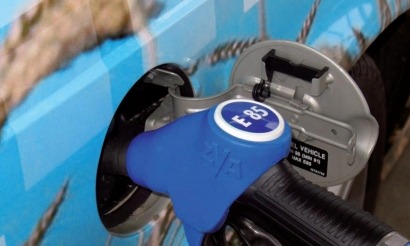
In 2010 biofuel continued to gnaw away at petrol and diesel consumption in the European Union. However its pace backs the assertion that EU biofuel consumption growth slackened off. In the transport sector, it increased by only 1.7 Mtoe compared to 2.7 Mtoe in 2009. The final total biofuel consumption figure for 2010 should hover at around 13.9 Mtoe.
According to the latest EurObserv’ER barometer, faltering biofuel consumption may be due to major European biofuel consumers, namely those that have stuck to their commitments to the biofuel directive, now wanting this market growth to ease up as it is not warranted by the 2009/28 directive’s less ambitious (10% of renewables in transport) and long term goals (2020). So it will be up to the countries that have yet to achieve their biofuel directive goals, to drive European growth in coming years. “The biofuel production sustainability criteria enforced by the European renewable energies directive may be a compounding factor in this foot-dragging scenario as most countries want to clarify the implementation of certification procedures before embarking on additional efforts to incorporate biofuel,” says the authors of the Barometer.
Germany topped the league table of biofuel consumption, consuming over 3 million toe of biofuel in 2010 (two third of which was biodiesel), followed by France, Spain, Italy and the UK.
Once again growth in bioethanol fuel consumption (26.1% between 2009 and 2010) outpaced that of biodiesel consumption (11.1%). The lack of interest in vegetable oil consumption is hardening (down 14.3%) and may still be due to increased German taxation on this biofuel. Biogas fuel consumption leapt by 40.1% year-on-year and is almost unique to Sweden, while other EU countries struggle to develop it.
Guaranteed sustainability
It will be harder to voice criticisms about biofuel’s poor sustainability performance under the terms of the 2009/28 renewable energies directive goal of 10% renewable sources in the transport sector’s final energy consumption for the 2020 timeline. This new goal has been combined with specific “sustainability” requirements for biofuel, in response to controversy surrounding their environmental impact, the price of foodstuffs and the loss of biodiversity.
Now, all fuels that do not offer 35% savings in greenhouse gas emissions (GHG) when their whole production cycle is considered compared to petrol or diesel will not be included in the goals and will not be granted public aid. This minimum threshold rate will rise to 50% in 2017 and 60% from 2018 onwards for all output generated by new production facilities. Furthermore, the directive takes pains to list the types of land that must not be planted with biofuel crops, namely natural forests, protected areas, wetlands and peat bogs. It expressly rules out converting forests into palm oil production plantations.
2020 target a long way off
As total consumption reached 13.8 Mtoe in 2010, the biofuel incorporation rate in the energy content of all transport fuels used in the European Union will not exceed 4.7%, which is a little more than one percentage point short of the 2003 biofuel directive target for a 5.75% incorporation rate in 2010.
In fact only a handful of countries will have made the mark, just 7 of the 27, namely Sweden, Austria, France, Germany, Poland, Portugal and Slovakia. The last three took until last year to achieve their targets, whereas the first four were already outstripping their European commitments as early as 2008.
Future growth of consumption in the European Union will, says the EurObserv’ER barometer, depend on external factors such as the increase in oil prices and the worldwide availability of biofuel. “The reduction in hydrocarbon reserves is a global phenomenon and the resulting development of biofuel consumption is rising sharply all over the world,” concludes the report.
Widespread use of E15 in the United States and that of bioethanol fuel in Brazil are two clear indications of this sea change. In Brazil, 86.5% of the cars sold in 2010, that is 2.9 million vehicles, were of the flex-fuel type, so 42.2% of Brazil’s fleet runs on ethanol, which amounts to 11.7 million vehicles. The issue of the availability of resource could be raised much earlier than expected, perhaps even before the directive deadline. It will dictate the pace at which 2nd-generation biofuels grow. For the time being this is not expected to rise until 2017. “These external factors are bound to influence the development of biofuel consumption in the European Union,” add the barometer’s authors.
The EurObserv’ER barometer is a project supported by the European Commission within the French Environment and Energy management Agency. The next EurObserv'ER Barometer focuses on ground sourced heat pumps and is expected in September 2011
For additional information:

